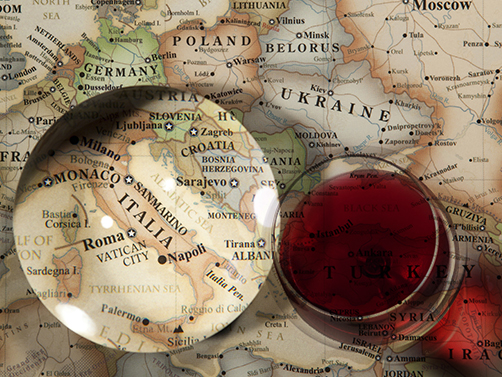After examining the characteristics taken into account by those who buy or taste a wine, including tannins (link all’articolo i miglior vini tannici d’italia in inglese), color (article link “the devil wears ruby red”) and alcohol (article link The alcohol content: definition, meaning and examples), let’s now analyze the tastes of wine.
The taste of wine: definition
Taste is the set of sensations perceived on the palate, linked both to the taste of the wine and to the olfactory or thermal stimuli. The sensations closely related to the taste are: sweetness or softness, bitterness, sapidity and acidity or freshness. Being perceived in different areas of the tongue and not all at the same time, it can often happen that in a wine contrasting flavors coexist.
Sweetness comes from the presence of sugars, polyalcohols and ethyl alcohol. Sugars turn into alcohol during fermentation, and when a certain amount of alcohol develops, fermentation stops naturally. This is why for some wines obtained from grapes with a high sugar content we talk about total alcohol content, indicating the alcohol content plus the sugar.
Bitterness is the sensation perceived in concentrations much lower than the others, and it is mainly found in red wines as it derives from the presence of tannins.
The sapidity, as the name suggests, is due to the presence of mineral salts, including sodium chloride (table salt), phosphates and tartrates (derivatives of tartaric acid). It depends on the characteristics of the soil, the climate in which the grapes are grown and the winemaking practices: sodium chloride is present in wines obtained from vineyards reared in lands close to the sea. Phosphates are mainly found in red wines and in wines from grapes grown in warm areas.
Acidity is linked to the acids that the wine naturally contains and, if it is not excessive, contributes to its harmony and balance, giving it a fresh and young character.
The taste of Apulian red wine par excellence
Let’s find out now concretely the taste of the Apulian red wine number one, the Nero di Troia (inserire link all’articolo in inglese).
Medium structured, full, fruity and with pleasing and smooth tannins: absolutely recommended for its freshness, that perfectly embodies the balance and character of this wine with a long and persistent finish, on gently balsamic notes. Absolutely to seize its fruity and intense aroma, with hints of spices, berries and cherry.
On average, it has a sugar residue of 14 g/l and a total acidity of 5.3 g/l: this red wine from Puglia is usually served at a temperature of 18 ° C and boasts of a legendary origin (https://www.crifo.it/en/blog/nero-di-troia-flavors-somewhere-between-legend-and-reality/), which gives prestige to the wineries that produce it (https://it.wikipedia.org/wiki/Cantina_di_Ruvo_di_Puglia).
The taste of the number one red wine of Veneto, Bardolino
Let’s move now to the opposite of the boot for a parallelism between flavors, all to try.
The Bardolino is the characteristic red wine of the east shore of Garda lake. On the palate it is pleasant, with medium tannins and structure, soft and with good acidity and sapidity. Perfumed, with fruity hints that recall cherries, pomegranates and wild strawberries, it is a slender wine, usually not aged in wood, and is served at a temperature of 16-18 ºC.
Elegant and of good persistence, Bardolino has an average alcohol content of 13%, a total acidity of 5.65 g/l and a residual sugar of 3.8 g/l.
All we can do is to try these two high-level reds, taking a journey through the taste of wine that embraces all of Italy, to the (re)discovery of those good flavors that the Bel Paese is able to give.

